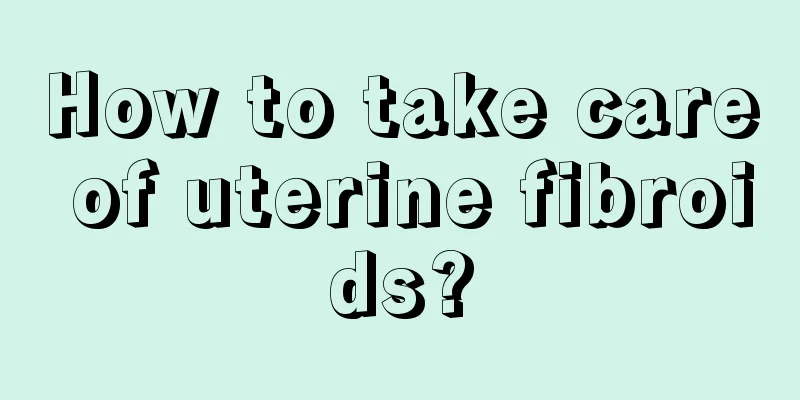How many days of bleeding after intrauterine adhesion surgery

|
The main purpose of intrauterine adhesion separation surgery is hysteroscopic treatment. With the application of hysteroscopy in clinical medicine, some difficult gynecological diseases can be treated in an intuitive, simple and safe way. It can not only distinguish the level and type of intrauterine adhesions, but also the toughness of the adhesions. Membranous adhesions and fibromuscular adhesions can be separated under hysteroscopy or removed surgically; while connective tissue-like high-density adhesions require electrosurgical separation under B-ultrasound monitoring, and an IUD is placed after the operation to prevent re-adhesion, and estrogen and progesterone are continuously taken to promote endometrial growth. It helps patients restore their menarche and some of them can become pregnant again. Hysteroscopic laparotomy is a minimally invasive surgery with little harm to the human body and quick recovery. So, is it painful to perform surgery to separate intrauterine adhesions? The editor assures everyone that intrauterine adhesion separation surgery is performed under anesthesia and women will not feel much pain. Anesthesia is a cross-acting inhibition of the central and/or peripheral nervous system caused by drugs or other means. The main characteristic of this inhibition is the loss of sensation, especially sensory nerves. Therefore, female friends do not need to feel anxious, because intrauterine adhesion separation surgery is not painful. How many days of bleeding after intrauterine adhesion surgery is considered normal? Generally, it is normal to have a small amount of bleeding during the recovery period of surgery, and the bleeding will be less than the normal menstrual volume. It is bleeding caused by local irritation and will disappear on its own in about three to five days. Of course, my physical condition is different, so it may take a little longer. Therefore, it is recommended to pay attention to rest after the operation, avoid excessive fatigue, pay attention to hygiene, avoid eating cold foods, increase nutrition, eat light and nutritious foods, do not have sex within one month, and go for a follow-up visit after the next menstrual period is over. What should medical care pay attention to after surgery for intrauterine adhesions? 1. Move as soon as possible: Except for high-risk patients, patients can be guided to do appropriate bedside exercises within 6 hours after surgery, and can get out of bed and move around after 6-8 hours, and gradually increase the amount of exercise. 2. Pain care: Patients may experience varying degrees of pain after surgery. Patients can undergo pressure relief surgery to relieve the pain spontaneously. If the pain cannot be relieved, analgesics can be given. 3. Observe the urination condition: Initially urge, guide and help the patient to urinate. For those who really have difficulty urinating, induce urination and provide catheterization if necessary. 4. Diet and medical care: What food should I eat for intrauterine adhesions? After the operation, you can eat nutritious liquid food and reduce the intake of irritating foods. 5. Basic medical care: Lie flat without a pillow for 6 hours to prevent the head from being raised too early, causing brain tissue to leak out of the meningeal cavity from the puncture site, resulting in low intracranial pressure, stretching the cerebral venous sinuses and meningeal tissues, and causing headaches. 6. Perineal care: After the operation, the perineum can be cleaned with 1/5000 potassium permanganate or 0.1% chlorhexidine aqueous solution twice a day to prevent retrograde infection in the uterine cavity during the catheterization period. 7. Observe vaginal bleeding: For patients with large surgical wounds and heavy bleeding, an intrauterine air balloon catheter is usually placed after surgery, and 8-10 ml of saline is introduced into the air balloon, which has the effect of activating blood circulation through compression. After the operation, you should pay attention to vaginal bleeding. If there is a lot of blood or water discharged, you should report it to the doctor in time and follow the doctor's advice to deal with it. If there is no abnormality, the intrauterine balloon catheter is usually removed 24 hours after the operation. |
<<: Cost of surgery for intrauterine adhesions
>>: What to eat after painless abortion is good for the uterus
Recommend
What should I do if I have a sore throat during menstruation?
People who are weak and have poor resistance ofte...
Endometrial thickness
The endometrium, also known as the endometrium, i...
Signs of pregnancy a few days before delivery
When it comes to the delivery period, every pregn...
How to relieve constipation during pregnancy
Pregnant women are prone to constipation, so what...
To make matters worse, why is Sange so miserable?
According to a report by the Global Times, as Ind...
Women often have back pain when it's almost dawn
In daily life, we often hear women complain about...
Breast sagging after childbirth, these methods can make your breasts firmer
It is very easy for women to experience sagging b...
What causes vaginal itching during menstruation?
Vaginal itching during menstruation is very commo...
Pelvic fracture nerve injury, seizing the treatment opportunity is the key
There are many cases of pelvic fractures and nerv...
Why do some people feel very painful during childbirth while others feel very relaxed? What is the relationship between labor pain and
We all know that pregnant mothers will have vario...
What is the best way to treat premature ovarian failure and amenorrhea?
Premature ovarian failure is a gynecological dise...
Shareaholic: Pinterest, Google and Instagram traffic grew significantly in 2017
199IT original compilation According to new data ...
Arm pain after medication
After a medical abortion, you should pay attentio...
What causes shortened menstrual period?
Menstruation is very important for every woman, b...
Why do women's nipples itch?
We all know that our human body is very honest. I...









